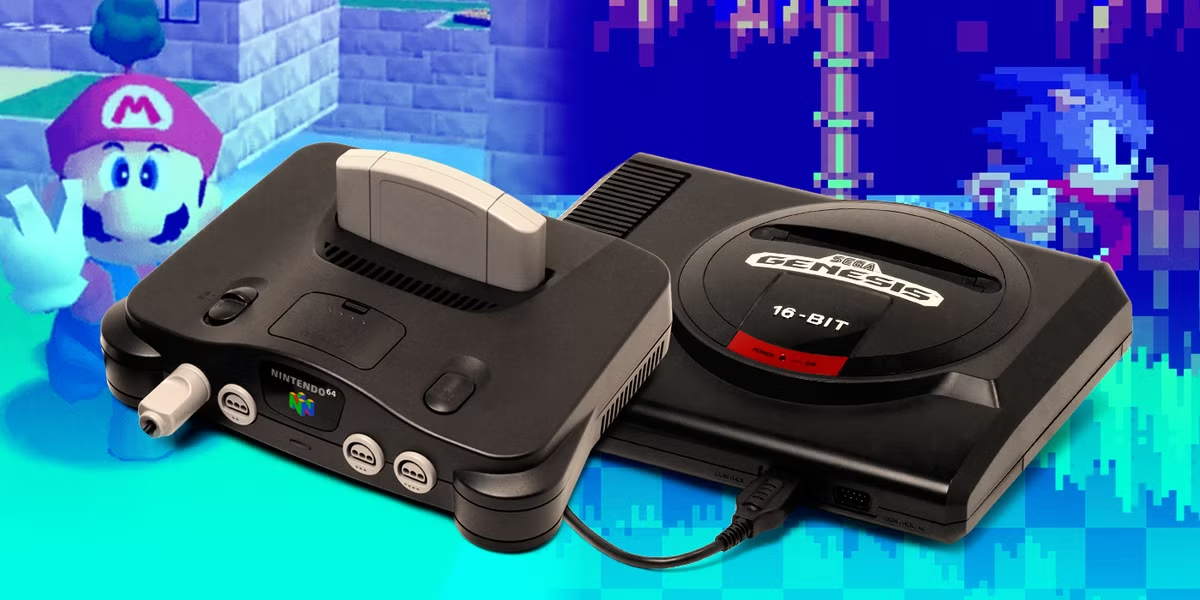Guides
How to Play Nintendo Retro Games: Rediscovering the Golden Age of Gaming

As someone who grew up during the rise of console gaming, I often find myself longing for the simplicity and charm of classic Nintendo titles. There’s a specific kind of joy that only comes from diving back into games like The Legend of Zelda or Metroid—titles that didn’t need photorealistic graphics or hundreds of hours of side quests to capture the imagination. Learning how to play Nintendo retro games again has reignited that sense of wonder for me, and it’s easier now than ever before.
In this article, I’ll walk you through the many ways I’ve found to revisit Nintendo’s legendary game library, from legal modern options to purist setups that mimic the experience of playing on original hardware.
Why I Wanted to Revisit Retro Nintendo Games
My first encounter with Nintendo was at a cousin’s house, crowded around a flickering CRT screen, gripping an NES controller like it was a portal to another world. Those moments left an imprint that no modern game has quite matched. Years later, I found myself yearning to relive those adventures—and wondering how to play Nintendo retro games in today’s digital landscape without breaking the bank or hunting down aging consoles.
Exploring Emulator Software
When I began my journey back into retro gaming, I started with emulation. Emulators are software tools that replicate the inner workings of old consoles on modern devices, such as laptops, smartphones, or tablets. The appeal was immediate: within minutes, I was running Super Mario Bros. on my laptop, complete with controller support.
Setting up emulators wasn’t nearly as complicated as I had feared. After some quick research, I found a handful of reliable programs for different systems. For NES titles, I found Nestopia to be stable and responsive. For SNES, SNES9x became my go-to. The experience was smooth, and I could even apply visual enhancements or speed tweaks, something I never dreamed of back in the day.
Making the Most of Emulators
To make emulators feel more authentic, I invested in a USB controller shaped just like the old NES pad. That single change made a huge difference. I also learned to use save states and rewind features, which made tough levels more manageable. Still, while this method taught me how to play Nintendo retro games quickly and easily, it didn’t completely satisfy my craving for authenticity.
Official Options Through Nintendo Switch Online
Eventually, I turned to Nintendo’s modern offerings for a more legal and supported alternative. The Nintendo Switch Online subscription service includes a growing selection of NES and SNES games, which you can play right on the Switch console. When I subscribed, I was delighted to find old favorites like Kirby’s Adventure, Punch-Out!!, and Star Fox ready to play without any downloads or extra work.
This platform offers useful modern features like instant saves, rewind, and online multiplayer for certain games. It’s a beginner-friendly option for people who want to explore how to play Nintendo retro games without dealing with technical hurdles or downloading third-party software.
Limitations of the Official Route
The drawback is that the available library isn’t comprehensive. Many classics are still missing, and the service only supports NES and SNES titles—nothing from the N64 or Game Boy families unless you pay for an upgrade. Despite this, it’s a convenient entry point, and I still use it when I’m in the mood for a quick nostalgia session on the go.
The Charm of Mini Consoles
Wanting a more tactile experience, I decided to try out the NES Classic and SNES Classic Edition mini consoles. These compact systems come pre-loaded with dozens of Nintendo’s greatest hits and plug directly into modern TVs via HDMI. I was immediately impressed by how faithful the controllers felt and how easy it was to start playing.
What really surprised me was how polished the interface was. You can browse titles by genre or popularity, and each game comes with multiple save slots. These mini consoles taught me that figuring out how to play Nintendo retro games doesn’t have to involve complex setups or rare parts—it can be as simple as plugging in a cable and pressing start.
Playing on Original Hardware
Of course, no retro experience would be complete without trying the real thing. After some searching, I picked up a refurbished NES from a local collector. It took some trial and error to get the old cartridges working reliably again, but the feeling of holding that original controller brought memories flooding back.
The visual quality on my flat-screen wasn’t ideal, so I eventually tracked down a CRT television, the kind I used as a kid. The result was incredible. The sound, the colors, and even the occasional flicker of the screen all felt authentic. It was like traveling back in time.
Challenges and Tips for Original Hardware
Maintaining old systems does require some patience. Cartridges often need cleaning, and power adapters can fail without warning. I learned to keep isopropyl alcohol and Q-tips handy for cleaning pins and invested in a universal power supply. If you’re serious about how to play Nintendo retro games as they were originally intended, this route offers the most genuine experience—though it takes effort.
Experimenting With ROM Hacks and Fan Projects
While digging into fan communities, I discovered ROM hacks and fan translations that expand on the classics. These are modified versions of original games that introduce new characters, levels, difficulty modes, or even full-fledged storylines. One of my favorites was a fan-translated version of Mother, a game that never officially came to North America in its original form.
This corner of the retro gaming world offers endless surprises and innovations. If you’re interested in discovering new ways of how to play Nintendo retro games, checking out these creative projects is definitely worthwhile.
Preserving a Piece of History
As I immersed myself further, I became more aware of the importance of preserving gaming history. Many titles are at risk of being forgotten due to outdated formats or neglected copyrights. Communities of volunteers and preservationists work hard to archive ROMs, restore game files, and document original artwork and manuals.
Supporting these efforts helps ensure that future generations will also know how to play Nintendo retro games and appreciate where today’s gaming culture began. I’ve since donated to a few preservation projects and joined online forums dedicated to cataloging lost or rare titles.
Tips for Getting Started
If you’re just beginning this journey, here are some beginner-friendly steps that helped me:
- Start with Nintendo Switch Online to test the waters.
- Try emulators like RetroArch if you want more control and flexibility.
- Invest in a replica USB controller for that classic feel.
- Explore secondhand markets for original consoles and cartridges.
- Check out fan forums for translated games and hacks that offer new experiences.
Reflecting on the Experience
Spending time with these classics reminded me why I fell in love with video games in the first place. The straightforward gameplay, catchy soundtracks, and pixel-perfect graphics have a charm that modern titles often overlook. Revisiting these games wasn’t just about nostalgia—it was about reconnecting with creativity and challenge.
More importantly, learning how to play Nintendo retro games again helped me slow down. These titles don’t hold your hand or distract you with endless objectives. They give you a world, some tools, and the freedom to figure it all out on your own.
Final Thoughts: Keeping the Past Alive
Whether you’re using an emulator, playing through Nintendo Switch Online, or booting up an original NES on a dusty old television, there’s no wrong way to enjoy these classics. The key is simply to start. You might be surprised by how these decades-old games still manage to entertain, challenge, and inspire.
For me, figuring out how to play Nintendo retro games wasn’t just about filling a nostalgic craving. It was about rediscovering a part of my identity—one shaped by pixels, beeps, and endless hours of adventure. And I don’t plan on putting the controller down anytime soon.










